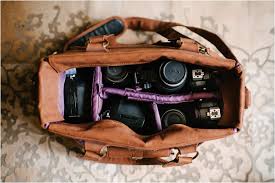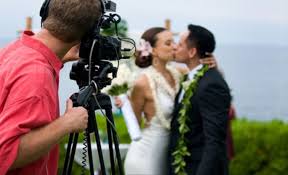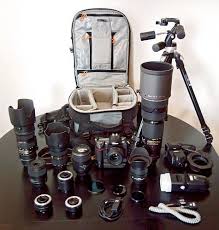What equipment do you need for wedding photography?
Weddings are vibrant and full of emotions, making it all too easy to have a purely romantic view of the day. For the couple and guests, that is very true. However, if you are a supplier on the day, it can be a very different experience. All the more if you are the wedding photographer! The pressure is on, and you have a huge responsibility to capture the day.
When you first begin photographing weddings, it is important to have a love for weddings and a connection to the occasion. If you hate weddings – which some people do – I suggest you steer clear of wedding photography. It is also beneficial to have a creative eye. If you lack both, it will be apparent on the images you capture.
When starting as a wedding photographer, it is quite understandable that you may not have the full arsenal of cameras, lenses, flashes, etc. Often we start with only the basic equipment in our bag and plenty of creativity (and for some, a healthy dose of confidence).
If you are considering being a wedding photographer and exploring what you can achieve with a basic kit, then this article is for you. These are also just my suggestions. I do not assume that you could not become a competent wedding photographer otherwise.

Camera and backup camera
I actually bring three cameras so I can shoot with two and have one additional as a backup, but I think only two would get the job done. It is essential to have a backup in the event that something goes wrong with your primary camera — and there are so many things that can go wrong.
Medium zoom lens
I use a 24-70 f2.8 as my medium zoom and the lens that is on my camera most of the time. This focal length is great for wedding portraits and photojournalism, offering both wide and tight perspectives. The pretty wide aperture gives me some flexibility in spaces that aren’t very well lit.
Telephoto Lens
You will need a longer lens to capture events from a distance, in particular the ceremony. I like to stand toward the back or sides of a ceremony as to not be blocking anyone’s view and taking photos from a distance with my 70-200mm. I also use this lens for closeups of the first dance.
Wide angle lens and prime lenses
These are not as essential for a wedding, but are certainly nice to have. The wide angle can get you shots of architectural details or big groups. The prime lens can allow you to shoot in dark spaces and give you dreamy depth of field.
Memory cards and batteries
Always bring more cards and batteries than you think you need. I will shoot 50-60 GB of images for a wedding and go through two sets of batteries per camera and per speedlight. Make sure the batteries are all charged up in advance.

Other Helpful Equipment But Non-Essentials
The following can come in handy but in my opinion, you can do without them:
- Grey card – You shoot at a fast pace in various lighting scenarios during a wedding – indoors, outdoors, tungsten, LED, natural lights, etc. It would be crazy to use a grey card every time you moved! You can shoot in Kelvin or use Auto White Balance. The important thing is that you shoot in Raw so you can adjust the white balance in post.
- Reflector – I used to carry a reflector when I first started, but now I take my flash guns instead. And I never go without at least two of them! But a reflector is handy. Because I don’t carry one with me most of the time now, when I shoot small details, I use a small piece of white card or anything white that may be handy.
- Tripod – I never carry a tripod as I find it too cumbersome and heavy! But you’d never see me cover a wedding without a monopod. They are easier to lug around!
Non-Essentials That Add Value to Your Service
Brides are often grateful when you magically produce things that they did not expect you to have. For instance, bobby pins, hair grips, scissors, or tissues. Likewise, if you help in other ways when you can, for example, putting the buttonholes on, helping with jewelry, etc. As they say, it’s in the little things.

Camera bag
You will need something to put all your gear in. Make sure it’s big enough and comfortable enough to haul around with you as you’re moving throughout the day.
Studio strobes and umbrellas
Some people may disagree with me that this is essential, but I like to have powerful strobes (more power than speedlights) to use on formal portraits if I need them. Sometimes, it rains or is too cold and I’m forced to take formals in a dark church. In this case, I like have the speed and power of strobes to evenly light up a large group of people.
Lens cleaning kit and lens hoods
It’s possible for the lens to get dirty or wet throughout the course of a quick moving event, so it’s good to keep a cleaning kit or lens wipes with you to keep smudges from ruining your shots. Lens hoods are a good way to keep lenses from getting dirty in the first place and also serve to keep sun flare down.
Good Communication Skills
Make sure that before a wedding day you’ve discussed with the bride and groom their expectations as well as yours. I send out a multi-page questionnaire with my contract that asks for the names of all the vendors, bridal party, and parents as well as special issues regarding families that I should know about. (I’d rather know that Mom and Step Mom don’t get along before the punches start flying when you try to get them in a “one big happy family” photo). In the questionnaire, I also ask the bride to circle adjectives about the feel of her wedding day and her style so that I can know her personality and her expectations a little better.
Introducing yourself to all the wedding vendors that day there also is a proactive way to help things run smoothly. Not only does it make life easier if you all work together, there’s always the possibility of future weddings together and referrals as well. It always makes the job more fun when you enjoy the people you work with and photography is no different.
- The Coordinator: The first person I usually introduce myself to the the wedding coordinator (or the person in charge of the venue if there isn’t a coordinator). They can help make the day run seamlessly and figure out how to sneak your couple away during the reception for those awesome sunset photos.
- The Videographer: The videographer is also an important person to befriend as they will be right by your side almost the entire day and you will most likely get into each others’ shots at numerous points throughout the day.
- The Officiant: Before the ceremony, I also pull the officiant aside and ask him if he has any restrictions or instructions for me (which in the light of this recent viral wedding video when the officiant interrupts the ceremony to tell off the photographers, is a really good idea). At this time, I request that when the officiant pronounces the couple as husband and wife and allows them to have their first kiss, he move to one side so I can get a great shot of my bride and groom. (The shot at the top of this article was thanks to the officiant who was delighted to comply with my request).
- The DJ: The DJ is usually super cool about helping you work with the schedule for the remainder of the day especially giving you warnings about surprise speeches during your dinner break when you’re trying to shovel a plate of food in your mouth in 60 seconds or less.
- Everyone Else: I also make sure I introduce myself to the banquet/catering manager, florist and make-up artist as they are a good source of referrals for future weddings.